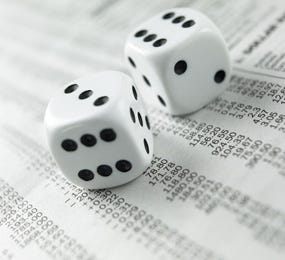|

|
Operating cycle is the third type of operating performance ratio we’ll examine in this tutorial. It makes use of receivables, inventory, and payables and aims to represent management performance efficiency. It is often compared with the cash conversion cycle because it makes use of the same component parts. What is different, though, is that an operating cycle analyzes these components from the perspective of how well the company is managing operational capital assets, rather than from the impact those components have on cash. (Related: Understanding The Cash Conversion Cycle)
Formula
The formula for an operating cycle calculation is as follows:
Operating Cycle (Days) = DIO + DSO – DPO
DIO = Days Inventory Outstanding
DSO = Days Sales Outstanding
DPO = Days Payable Outstanding
Components
DIO
To determine a company’s operating cycle, analysts must first calculate the various components used in the formula above. To compute DIO, follow these steps:
1) Divide the cost of sales (available on a business’s income statement) by 365 in order to find a cost of sales per day figure.
2) Calculate the average inventory figure by adding the year’s beginning (or previous year’s ending) amount and the ending inventory figure (both of these are available in the balance sheet); then, divide by 2 to obtain the average amount of inventory for the time period in question.
3) Divide the average inventory figure from step 2 by the cost of sales per day figure from step 1.
A company with cost of sales of $760 million and average inventory of $560 million, say, would have a DIO as follows:
$730 million/365 = $2 million (cost of sales per day)
DIO = $560 million/$2 million = 280 (days inventory outstanding)
DSO
DSO can be computed using net sales and accounts receiable figures and with the following sequence of steps:
1) Divide net sales (available on a company’s income statement) by 365 to determine a net sales per day figure.
2) Calculate the average accounts receivable figure by adding the year’s beginning (or previous year-end) amount and the ending accounts receivable amount, then divide by 2 to obtain the average over the time period in question.
3) Divide the average accounts receivable figure by the net sales per day figure.
The process of determining DSO is very similar to that for calculating DIO, although it uses different figures.
DPO
Like DIO and DSO, the process for determining DPO is straightforward. In this case, though, you’ll need the cost of sales and accounts payable figures for the company and time period in question. Use the following steps to calculate DPO:
1) Divide the cost of sales (available on the income statement) by 365 to determine a cost of sales per day figure.
2) Calculate the average accounts payable figure by adding the year’s beginning (or previous year-end) amount and the ending accounts payable amount, then divide by 2 to determine the average.
3) Divide the average accounts payable figure by the cost of sales per day figure.
Once you have DIO, DSO, and DPO figures, you can then plug them into the formula at the top of the chapter to determine a company’s operating cycle.
Variations
It’s common to express the three primary components of the operating cycle (DIO, DSO, and DPO) in terms of turnover as a times (x) factor. A days inventory outstanding of 280 days would therefore be expressed as turning over 1.3x annually (because 365 days/280 days = 1.3 times). Some analysts prefer the use of actual days as it is more literal and easier to understand from a conceptual standpoint. (Related: How To Evaluate A Company's Balance Sheet)
Let’s compare two hypothetical companies with figures as follows:
|
|
Company A |
Company B |
|
DSO |
58 days |
105 days |
|
DIO |
280 days |
294 days |
|
DPO |
63 days |
145 days |
|
Operating Cycle |
275 days |
254 days |
In terms of collecting on receivables, it appears from the DSO figures that company A is significantly more operationally efficient than company B. Common sense would dictate that the longer a company has money which remains uncollected, the greater the level of risk that it is taking. Is company B remiss in not collecting its receivables more efficiently? Or perhaps is it trying to add market share by allowing its customers easier payment terms?
These two companies have almost identical days inventory outstanding. In this case, both companies have DIO figures which are higher than the average company across industries. This, then, is likely a reflection of the industry in question, rather than poor efficiency. However, in order to get the fullest picture, it would be helpful to compare these two DIO figures against those of other companies in the same industry.
When it comes to DPO, company B has a major advantage. It is stretching out its payments to suppliers far beyond what company A is able to do. In a sense, it is more efficient at using other people’s money, but the reason for this is not immediately clear from these figures alone. An analyst would likely want to know what that means for the credit reputation of each of these companies, and why they are different.
Shorter Is Better?
It’s easy to assume that shorter is better when it comes to a company’s cash conversion cycle or its operating cycle. This is true in the case of the former, but not necessarily the case in the latter. Of course, there are many variables attached to the management of receivables, inventory, and payables, and these require many decisions on the part of managers.
For example, short payment terms may restrict sales. Minimal inventory levels may mean that a company is unable to fulfill orders on a timely basis, which likely means that some sales are lost. Therefore, it would appear that if a company is experiencing solid sales growth and reasonable profits, its operating cycle components should reflect a high degree of historical consistency. With that, we reach the end of our tutorial on operating performance ratios with a reminder: consistency of these ratios across a company’s history is one of the most important measures of success.
-
 Investing
InvestingHow Working Capital Works
A firm's handling of working capital reflects its efficiency, financial strength and cash flow. -
 Investing
InvestingMeasuring Company Efficiency To Maximize Profits
Efficiency ratios can provide indications of profitability, shows how efficiently a company is being managed, utilizes its assets and handles liabilities. -
 Investing
InvestingUnderstanding Market and Full Risk Cycles
Investor need to understand the four stages the markets tend to experience. -
 Investing
InvestingInventory Valuation For Investors: FIFO And LIFO
We go over these methods of calculating this component of the balance sheet, and how the choice affects the bottom line. -
 Investing
InvestingThe 4 Stages of the Investor Emotion Cycle
Investors have an emotional counterpart to each of the four stages of the market cycle. -
 Investing
InvestingCalculating Days Working Capital
A company’s days working capital ratio shows how many days it takes to convert working capital into revenue. -
 Investing
InvestingUnderstanding Periodic vs. Perpetual Inventory
An overview of the two primary inventory accounting systems.


